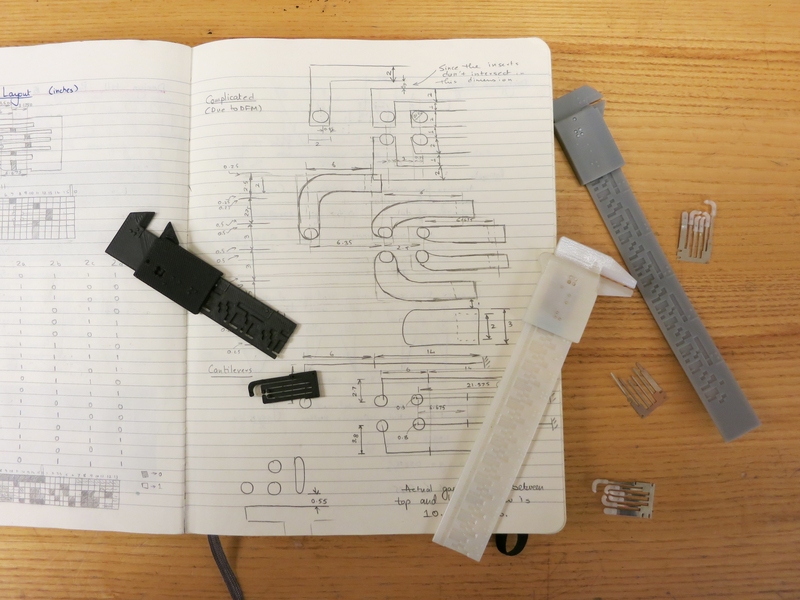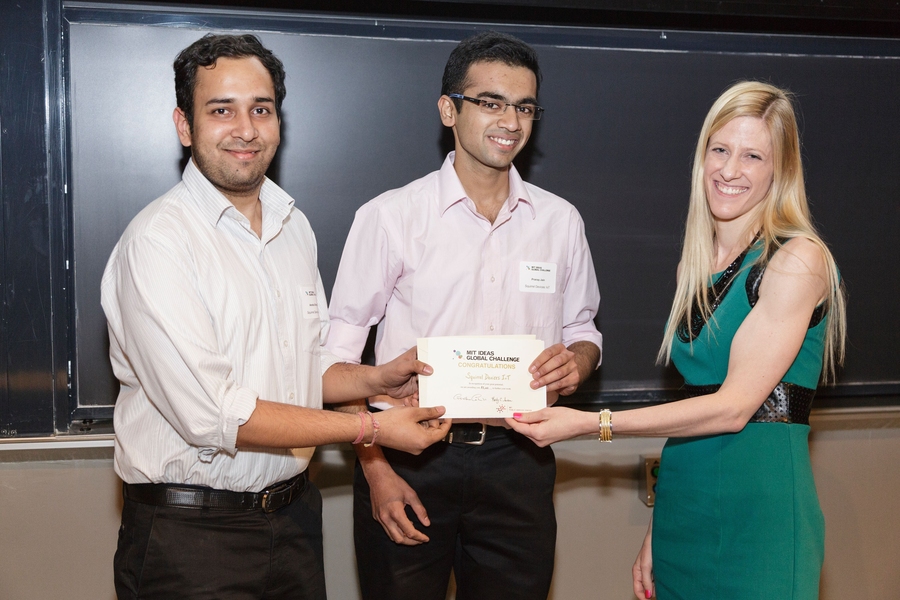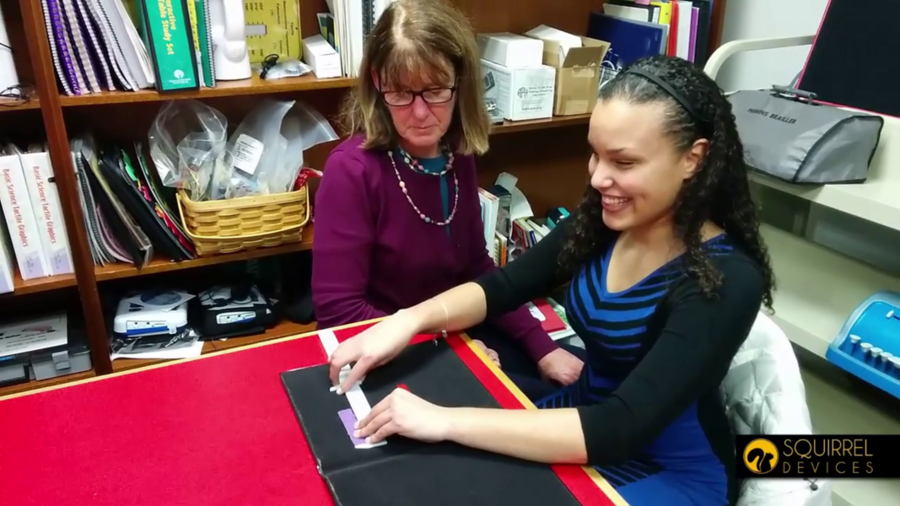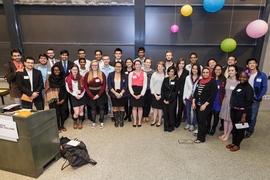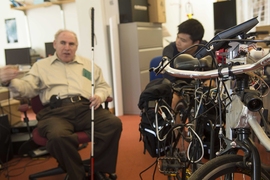How would you learn geometry without seeing the shapes? How would you calculate Pythagoras’ lengths without seeing the measurements? MIT graduate students Pranay Jain and Anshul Singhal asked these questions, seeking to address the fact that most blind students drop out of math and science after 8th grade because content becomes unavailable and the laboratory becomes inaccessible.
About 75 percent of the blind and low-vision (BLV) community is unemployed in the United States and is significantly underrepresented in the growing fields of science, technology, engineering, and math (STEM). Jain and Singhal, PhD candidates in Course 2 (mechanical engineering) at MIT, co-founded Squirrel Devices to tackle this problem. Their first instrument aims to make geometry’s continuous shapes and lengths measurable with a plastic sliding caliper that enables BLV students to read measurements in Braille, as one would on a regular ruler.
Jain and Singhal are not new to the assistive technology community; the two worked on a Refreshable Braille Display in their undergraduate years at the Indian Institute of Technology in Delhi. The team reflects, “One has a lot of questions when first interacting with the community. We wondered about using phrases like ‘take a look at this!’ or holding our hands out for a handshake. Would they care about the color of the device?” The answer is, yes, of course they care! BLV students may not be able to see color, but like any 13-year old, they know the connotations of pink or blue. As a result, Squirrel Devices chose a bright yellow for the caliper.
Many BLV students also asked for a talking, digital measuring instrument. But Jain and Singhal knew that they wanted a mechanical solution, one that wouldn’t be as prone to electronic failure, or as expensive. “We were repeatedly reminded that education is increasingly becoming digital, but you can’t listen to a diagram, can you?” notes Jain.
The MIT community has helped push Squirrel Devices forward. The team received support from the IDEAS Global Challenge, the annual innovation, service, and social entrepreneurship competition run by the Priscilla King Gray Public Service Center. “IDEAS’ support was critical — the network, coaching, training, and the application process itself — all were very useful. It forced us to create a business plan, prototypes, posters, and get feedback from the judges. We got further along the process than we would have on our own, and were plugged into a community of people who truly care,” states Jain. They also cited Paul Parravano, co-director of MIT’s Office of Government and Community Relations, as a source of inspiration and motivation. He has blindness and was the first user to test the device and give feedback. The late professor Seth Teller was crucial in helping the team find the right partners, and they have taken advantage of the various maker-spaces on campus.
Squirrel Devices has achieved revolutionary impact without reliance on cutting-edge 21st-century technology. Unsurprisingly, the device has been an immediate hit with their users. They have already sold thousands of units since last year, in partnership with the National Braille Press, and received the Louis Braille Touch of Genius Prize for Innovation in recognition of their thoughtful integration of Braille with existing tools to open up new opportunities for BLV students. “The use-case always surprises us,” says Jain. “A student we gave the device to immediately measured the length of his finger — a thing we take for granted.” One teacher, who had previously wondered how students who had yet to grasp fractions could use the caliper, called the team to tell them how thanks to it, her students are becoming fluent in fractions. Another teacher was glad her students now had a way to accurately measure liquids in a graduated cylinder.
The success of the caliper has built excitement for Squirrel Devices’ next instrument, the Tactile Protractor, which is currently under development.

